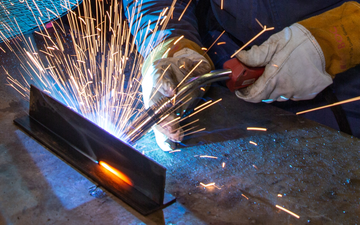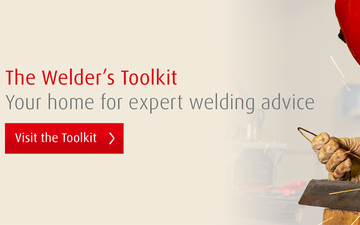- Official BOC UK Online | Industrial Gases | Products & Solutions | BOConline UK
-
Shop
- Industries
- Processes
- Gases & Equipment
-
Solutions
-
Services
-
Health & Safety
-
Contact & Support
- What's Happening
-
Net Zero Strategies
The Variables that can Impact on Welding Success
Posted by BOC

Welding is a little like driving a car. Not enough power to your engine, a break in the fuel line – or worse, the wrong fuel in your tank, and you’re going nowhere.
The same is true for welding. Your current, gas flow rate and shielding gas selection can all have a detrimental effect on your welds if they’re not set up properly.
In the last two blogs in our Welder’s Toolkit series, we looked at assembling your welding kit, and common issues to look out for. This time, we’re examining the variables that can impact on the quality of your welds.
Why is weld current so important?
Your welding current and voltage in the MIG/MAG process is the variable that has the greatest effect on your weld penetration. An increase in your voltage and current will increase the penetration of your weld, while a lower current and voltage will generally decrease penetration.
Check the right current for your weld, then adjust your settings using the controls on your welder. The best way to fine tune your settings is to practice on scrap metal the same thickness you want to weld. On lower settings, they will tend to be narrower and taller, while higher settings will achieve a wide and flat weld.
Be sure to check the reverse weld too – you want to make sure you have good penetration, but not too much.
Setting up your Welding Machine video – provides more detailed guidance on how to set up your machine correctly to get the best possible results.
Please note: cookies must be enabled to view the video. If you do not see the video, please click on ‘Cookie Settings’ and enable Cookies in your browser.
Choosing the right shielding gas
Getting your shielding gas selection right is one of the most important decisions you can make for the quality of your weld. Aside from protecting your finished weld from the effects of oxygen and nitrogen in the atmosphere, it affects your weld’s bead shape and size, as well as its protecting against those common welding problems.
But it’s important to choose well. Not all shielding gases work in the same way, so decide upon the most important attributes you need from your gas and match it using our online advice or ask the team in your local Gas & Gear.
Just remember, the gas may need to change as the thickness of your material increases. BOC offers the widest range of shielding gases that can help with every job. You can find out more about shielding gases and our range on our website.
Setting your gas flow rate
After choosing your shielding gas, it’s important to ensure that the flow rate to your welds is set to the right level.
Get it wrong and you can draw in atmospheric contamination, increasing the levels of oxidation and resulting in defects like porosity and excess spatter. You may also have trouble sustaining your weld arc. And don’t forget, if your flow rate is unnecessarily high, you could find yourself wasting money on excess gas.
Your wire speed, consumables and weld set up can all impact on your flow rate. So, it’s important to check the rate you need, carefully set your flow rate and ensure your connections are all leak-free. Leak detection fluid and a peashooter flow meter are both cheap and helpful tools to make sure your correct and everything is working as it should.
Check out our guide to selecting the ideal shielding gas flow rate in our guide – How to Deal with Porosity.
Have you checked out the Welder’s Toolkit?
The Welder’s Toolkit is our new online resource for the welding community and is packed full of information and tips to work safely and achieve better welds. Take a look now.

